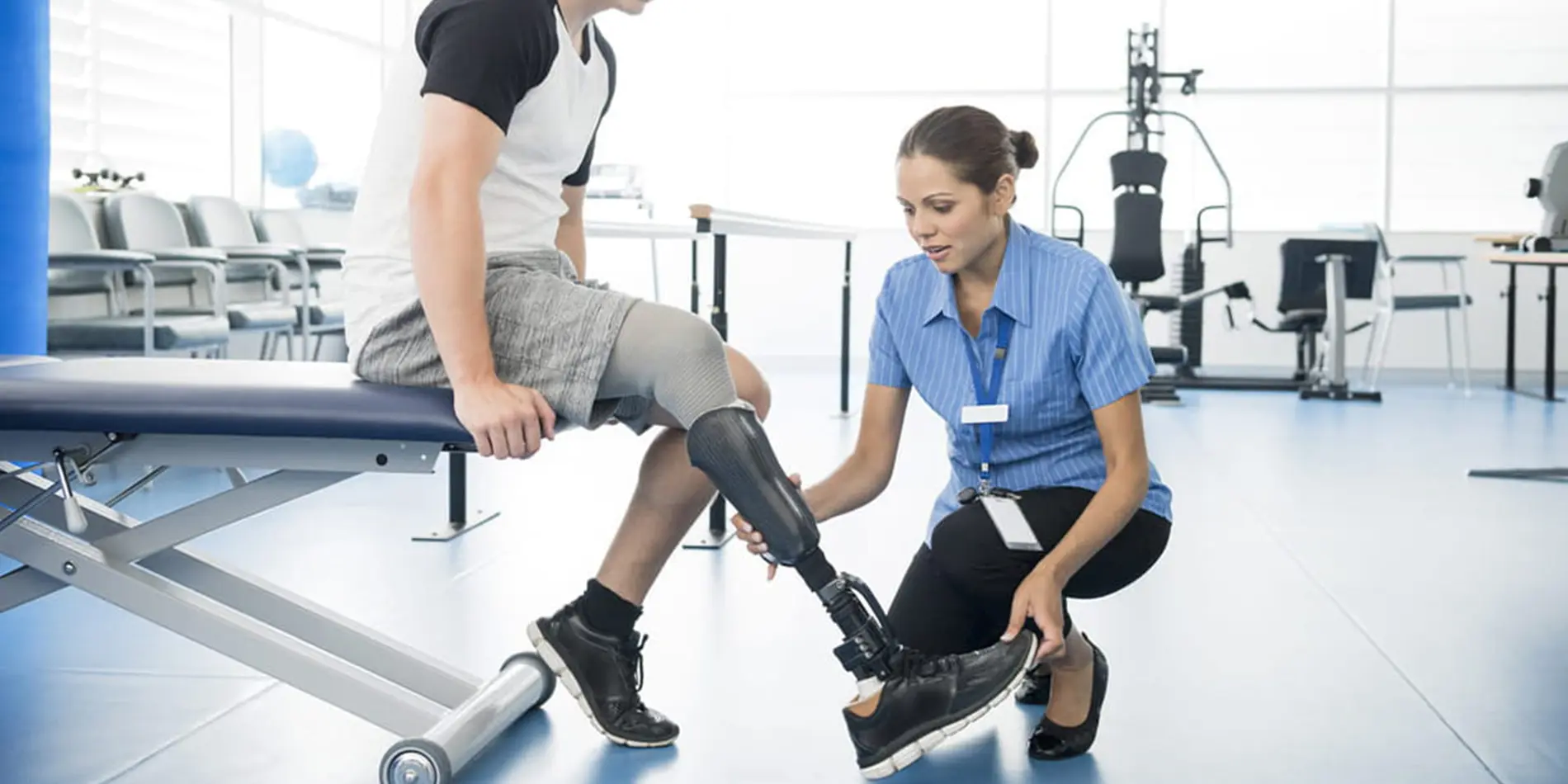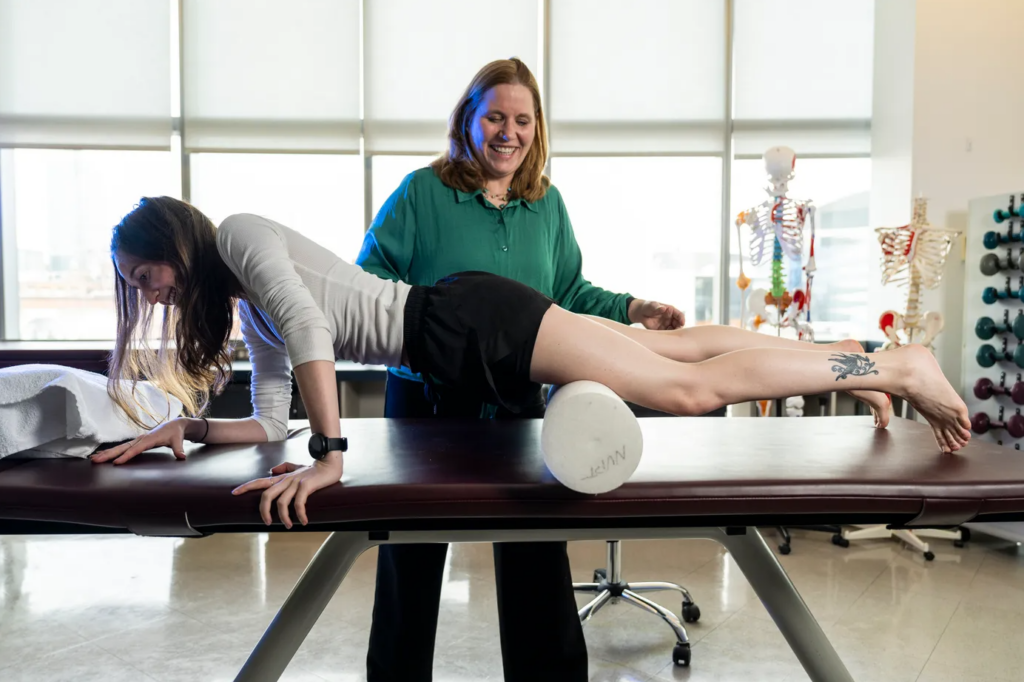It’s a little known fact that people with disabilities are the world’s largest minority. According to the United Nations’s Department of Economic and Social Affairs, an estimated 1 billion people—roughly 15 percent of the global population—live with physical impairments, and that number is only growing. In the United States alone, 61 million adults are estimated to live with a disability, according to the Centers for Disease Control and Prevention (CDC).
As such, technology plays a crucial part in the overall well-being of today’s population. For people with disabilities, this technology can change their lives by providing easier access to others, sustainable independence, and even job employment. Rehabilitation engineering is one of several critical industries that works with these life-improving technologies.
What Is a Rehabilitation Engineer?
A rehabilitation engineer provides technology solutions for people with disabilities by using an in-depth knowledge of engineering principles. Rehabilitation engineers offer their expertise in various ways, which the Rehabilitation Engineering and Assistive Technology Society of North America categorizes into four groups:
- Using already available devices to curate functional solutions
- Adapting and customizing available technology to work as a solution
- Developing new technology solutions
- Testing new technology for safety and compliance
Regardless of the approach or area of expertise, a rehabilitation engineer strives to use technology to increase functional capabilities and independence for those who are physically impaired. Some examples of these improvements include increasing range of motion or communication to achieve independent living and/or employment.
How to Become a Rehabilitation Engineer
Rehabilitation engineers play a crucial role in making independent living possible for everyone. As such, this important position has several education, skill, and experience requirements for anyone interested in breaking into this exciting career.
Here’s everything you need to know about how to become a rehabilitation engineer.
Earn the Right Degree
All rehabilitation engineers must meet the basic educational requirements for entering the field of human movement and rehabilitation. This typically includes a bachelor’s degree in a related science or engineering program, including biomedical engineering, electrical engineering, industrial engineering, or mechanical engineering. Once students earn their bachelor’s, they are expected to enroll in a master’s degree program in rehabilitation engineering or technology.
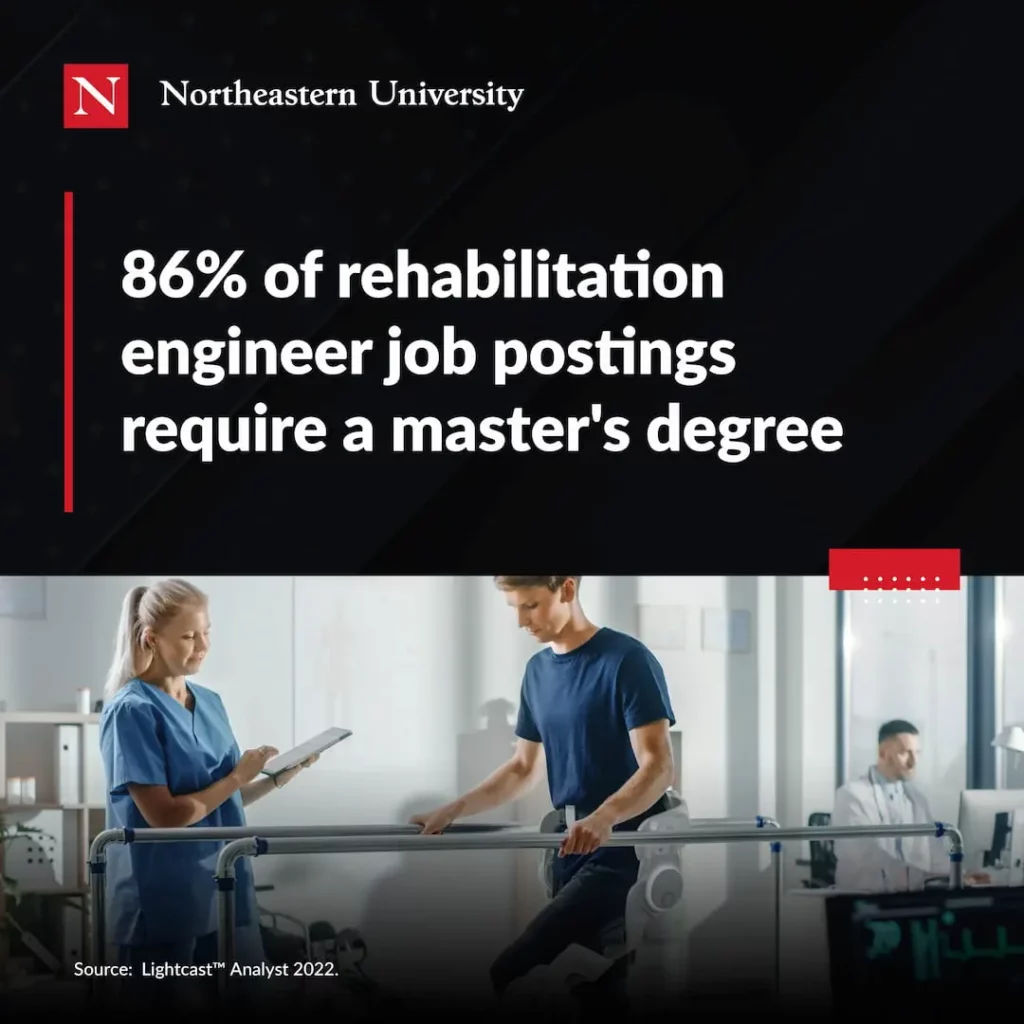
While a bachelor’s degree in engineering is an incredibly valuable asset to have in today’s job market, it doesn’t guarantee entry into the field of human movement and rehabilitation. According to Lightcast data, nearly 86 percent of job postings for rehabilitation engineers require a master’s degree. Therefore, earning a master’s degree in human movement and rehabilitation is a necessary step to becoming a rehabilitation engineer.
Acquire the Right Skills
As with most jobs, rehabilitation engineer job postings request certain specialized skills to help them easily identify the most qualified candidates. In rehabilitation engineering, the two most important competencies are biomedical engineering and rehabilitation skills. According to a Lightcast report, 100 percent of rehabilitation engineer job postings list both of these skills.

Biomedical Engineering
Biomedical engineering is the application of the principles and problem-solving techniques of engineering to biology and medicine. It’s a much-needed aid in nearly every part of the medical process. For example, biomedical engineering plays a large role in developing technologies, such as surgical robots, to add precision and speed to various medical procedures. In the case of people with disabilities, biomedical engineering is key to providing the necessary technologies needed to improve quality of life and increase independence.
Rehabilitation
According to the World Health Organization (WHO), rehabilitation refers to care that helps people get back, keep, or improve abilities needed for daily life. Anyone can need rehabilitation services at some point in life (e.g., after an injury, due to natural aging, or due to a biological condition). The key to rehabilitation is helping others become self-sufficient, functioning individuals. It’s a much needed skill in healthcare that experts predict will only increase in importance as the global population continues to grow and live longer.
Obtain Your Certifications
Most rehabilitation engineering job postings don’t have certification requirements, but graduates are encouraged to become registered professional engineers in the states in which they work. There are also certain certifications that could prove beneficial when applying to jobs.
For example, the Rehabilitation Engineering and Assistive Technology Society of North America (RESNA) offers two certificates that benefit rehabilitation engineers:
- Assistive Technology Practitioner (ATP): For professionals who demonstrate competence in analyzing a customer’s needs in the use of technology
- Assistive Technology Supplier (ATS): For professionals involved in the sales and service of commercially available devices that people with disabilities benefit from
To become certified, a candidate must have a relevant bachelor’s or master’s degree, work experience in assistive technology, and pass the exam administered by RESNA for the respective certificates.
Get Experience
As in most professional fields, work experience is essential to success. However, from 2020 to 2022, nearly 71 percent of job postings for rehabilitation engineers only required a minimum experience of 0–1 years. Despite this low minimum requirement, prospective employers are still looking for experienced professionals. In many ways, this provides an opportunity for students looking to stand apart from other applicants. Try to find various ways to acquire experience, such as utilizing your biomedical engineering or rehabilitation skills while in school by working with people with disabilities. Many institutions, like Northeastern University, offer students opportunities to gain field experience while also earning a degree.
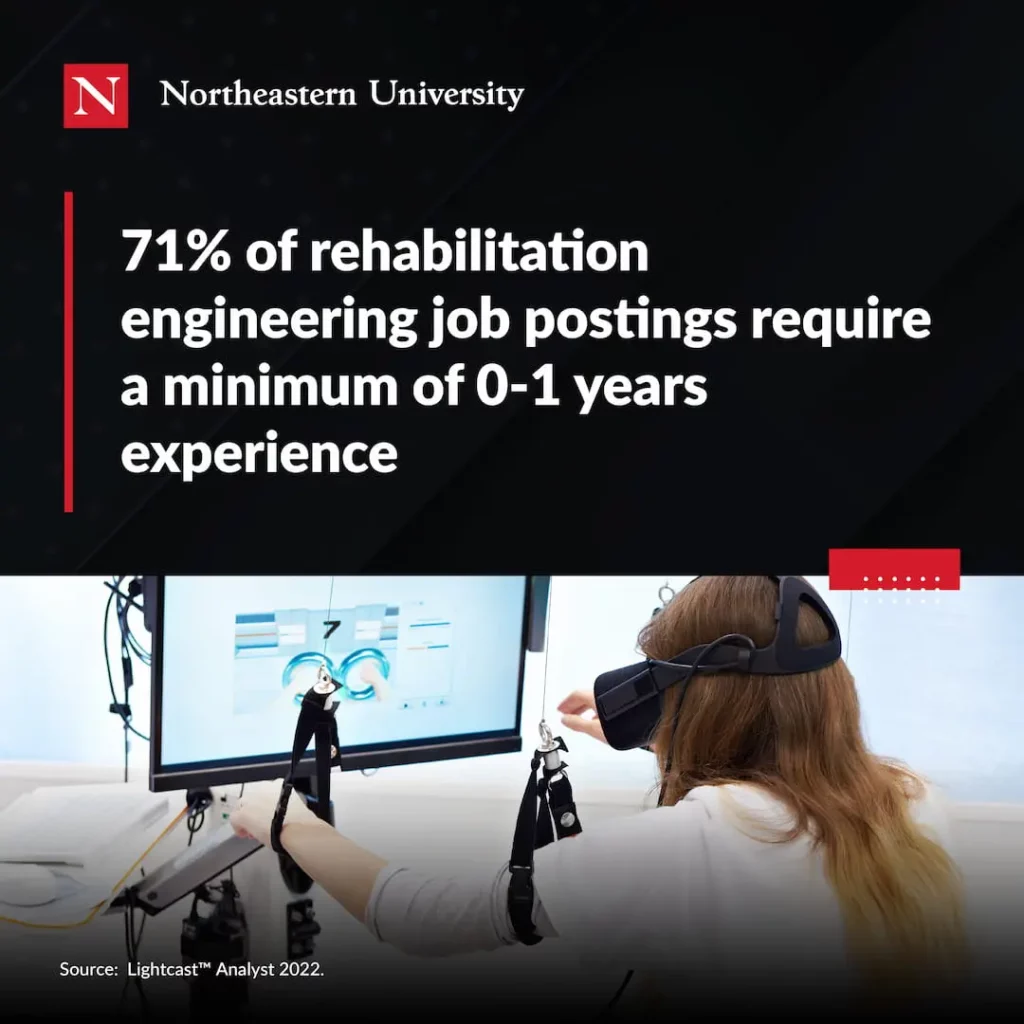
Is a Career as a Rehabilitation Engineer Worth It?
Becoming a rehabilitation engineer can be hard work and requires both time and money. However, those who are passionate about helping others through rehabilitation and technology will feel rewarded in the numerous challenges this career path provides. Still not convinced? Here’s a look at some of the reasons rehabilitation engineering could be the right path for you.
Offers Job Opportunities in Multiple Industries
While rehabilitation engineers can work in myriad industries, most are employed in the same industries in which biomedical and healthcare engineers work. Since many of these industries have both high earning potential and an increasing demand, these are some of the best sectors to start a career in.
Some of these industries include:
- Medical Equipment and Supplies Manufacturing
- Scientific Research and Development Services
- Pharmaceutical and Medicine Manufacturing
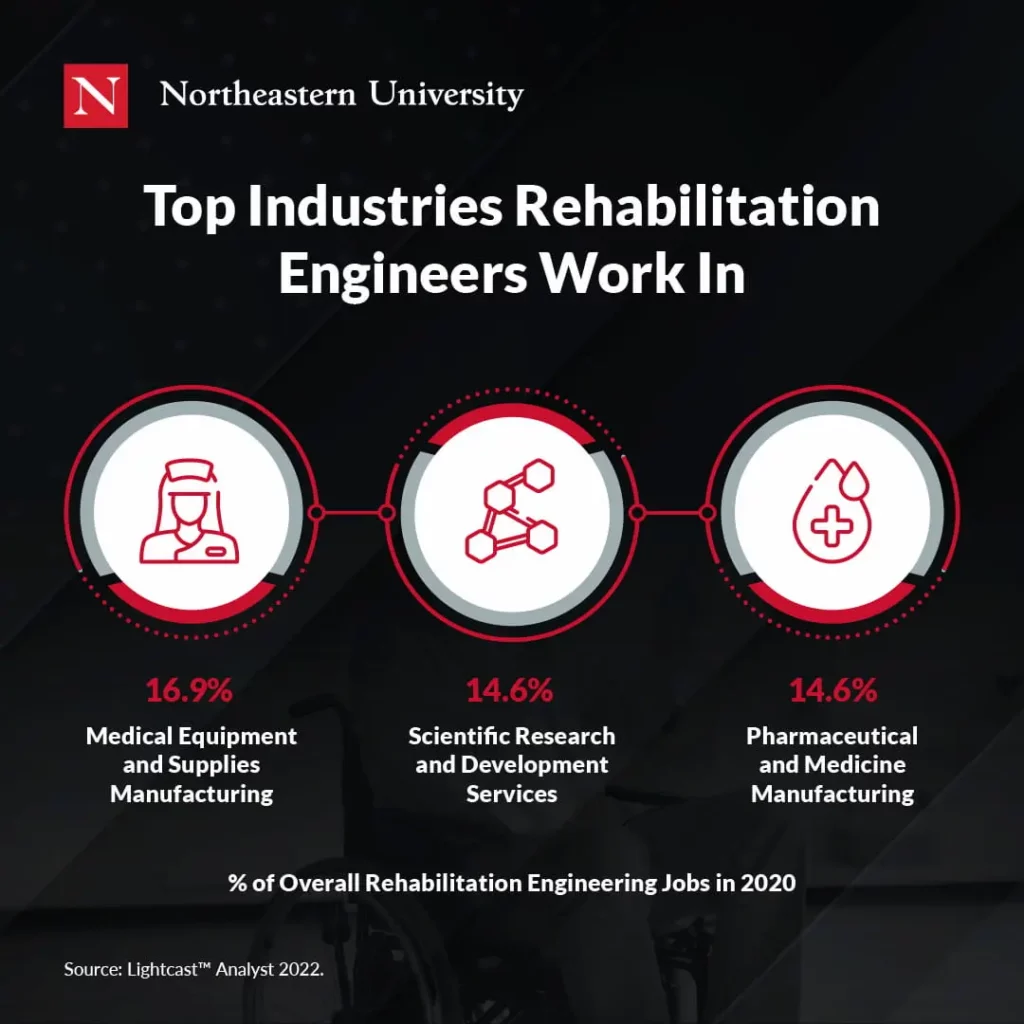
According to Jack Dennerlein, program director of the Experiential MS in Human Movement and Rehabilitation program at Northeastern, there are more opportunities for rehabilitation engineers in industries focused on technology development than in healthcare itself. This assessment stands true when looking at a typical rehabilitation engineer’s educational background in various engineering disciplines and technologies.
Provides Strong Career Outlook
Rehabilitation engineering is a substantive career. According to the U.S. Bureau of Labor Statistics (BLS), the employment of all biomedical engineers, including rehabilitation engineers, will grow by the national average of six percent from 2020 to 2030. At the time of publishing, the median salary for rehabilitation engineers is $69,348, and this number is projected to grow in the coming years.
Improves Others’ Lives
Rehabilitation engineers’ work directly benefits various communities who need assistance. According to the National Institute of Biomedical Imaging and Bioengineering, rehabilitation engineers help in many ways, from developing navigation aids for the blind to restoring muscle control for those suffering from spinal cord surgeries. These innovations have enabled people to regain their independence and take back control of their everyday lives in very meaningful ways. As Jack Dennerlein puts it, students who enroll in the Human Movement and Rehabilitation programs at Northeastern “just want to do something good for somebody else.”
Start Your New Career on the Right Foot
Rehabilitation engineering is a highly rewarding career path that has become increasingly accessible to prospective rehabilitation professionals. For example, the accelerated, experienced-focused MS in Human Movement and Rehabilitation at Northeastern allows students to complete their master’s degree in a 12-month period, offering them various opportunities to work with expert rehabilitation professionals active in the field.
This unique experience is incredibly inclusive to those who have left the field for some time or are looking for a career change. With various “boot camp” exercises and field-specific knowledge, Northeastern’s program prepares all its students for the demands of human movement and rehabilitation.
Interested in learning more about human movement and rehabilitation? Check out Northeastern’s Master of Science in Human Movement and Rehabilitation Sciences program to see what you can do to start a career in rehabilitation.
Download Our Free Guide

Career Guide
Learn How to Break Into the Field of Human Movement and Rehabilitation Sciences

